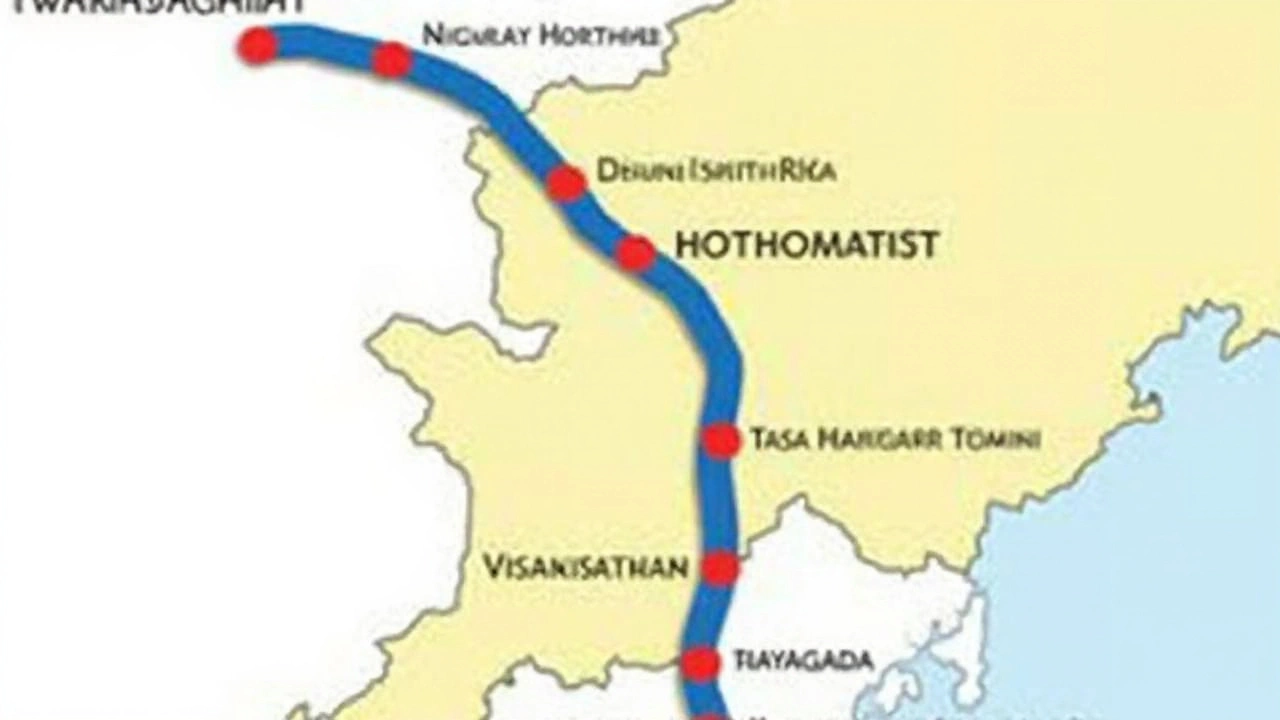Vande Bharat Express Shakes Up Durg-Visakhapatnam Rail Travel
If you haven't heard yet, the iconic Vande Bharat Express is now making daily (well, six days a week) runs between Durg in Chhattisgarh and Visakhapatnam in Andhra Pradesh, slicing through the distance in just around 8 hours. Forget the sleepy, slow rides of old: this is a high-speed, air-conditioned train with all the bells and whistles. It’s got only one rest day every Thursday, so most mornings, Durg’s station is buzzing before sunrise as passengers board at 5:45 AM, hoping to reach Visakhapatnam or somewhere along the route long before nightfall.
There’s a reason this new train has drawn a crowd. It covers 565-567 km but does it with style and speed usually seen only in India’s busiest metros. The journey isn’t just fast from end to end — the Durg-to-Raipur stretch now clocks in at just 28 minutes, turning what could be a tiresome hop into a smooth glide. The train stops at a total of nine stations: Raipur, Mahasamund, Titlagarh, Rayagada, Vizianagaram, plus Kantabanji, Kesinga, and Parvathipuram. These stops spread the benefits of rapid transit across both states, letting people from smaller cities board what’s often called the 'next-gen' of Indian trains.

Fare Changes, Service Upgrades, and the Mini Rake Twist
If you’re thinking about riding, you’re probably wondering about the fares. Here's where the Vande Bharat does things differently. The standard Chair Car ticket is ₹745, much cheaper than air travel and a step above most other trains. For those wanting a bit more elbow room and luxury, Executive Class seats go for ₹2,080. Both options come with modern comforts: plush seats, big windows, and a much quieter ride than you might expect from Indian Railways’ older coaches.
But here’s the twist: The train is about to get shorter, literally. After its debut in September 2024, officials noticed that the 16-coach rake was running emptier than they wanted. So from January 2025, passengers will find themselves on an 8-coach Mini Vande Bharat 2.0 rake instead. The shorter train should make for a cozier and more cost-effective ride, all while maintaining the train’s signature 71 km/h average speed. The switch isn’t just about numbers; it’s about making the service fit what people actually need.
Infrastructure tweaks like this show how the railways are adjusting quickly. The Durg-Visakhapatnam corridor now has a modern solution for cross-state travelers who need speed and regular departures. Plus, the train’s mix of big and small town stops means passengers between Chhattisgarh and Andhra Pradesh have new ways to plan quick trips, whether for business or family visits.
India has seen a rail revolution up close with Vande Bharat, but the move to smart, smaller rakes—even for major intercity links—shows that the future might not always be about making things bigger. Sometimes, it’s about getting things just right.



